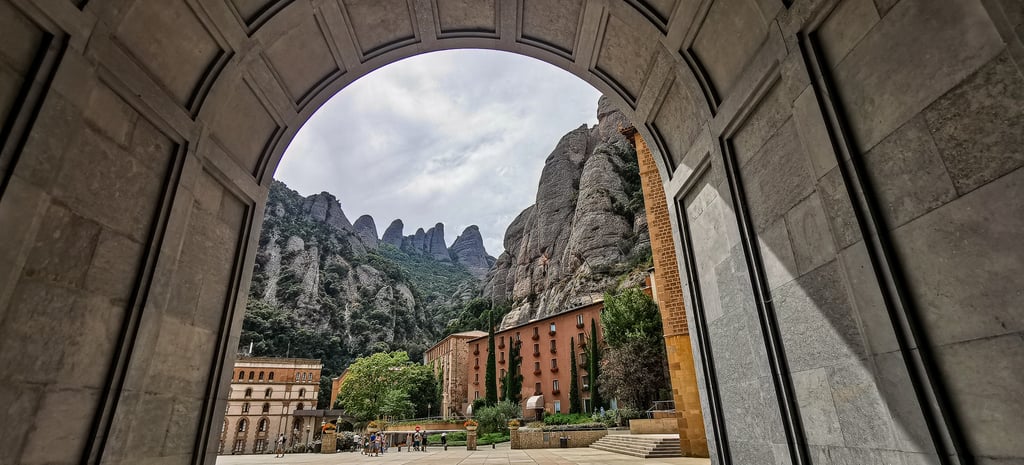
SPAIN

SPAIN
Spain itinerary & things to do
In this Spain itinerary, we share some of the best places to visit. Discover the amazing Basque Country. Explore the vibrant city of Madrid and the old cities of Toledo and Segovia. Be mesmerized by the Arabic architecture in Cordoba and Granada. Unpack little Gibraltar and Ronda. Enjoy the best of the coastal cities of Malaga, Valencia and Barcelona.
Spain: a surprisingly diverse country with an eternal summer vibe
The country of Spain is incredibly diverse, both in nature, as well as history and culture. You've got the distinct Basque Country in the northwest and the Catalan region in the northeast. Dramatic mountain and desert landscapes as well as picturesque coastal towns and cities. Typical elegant Spanish architecture combined with beautifully detailed Arabic architecture from when Moorish sultans captured the south of Spain.
On top of that, Spain is perfect for summer lovers, as the Spanish have mastered the art of outdoor living. You can find cosy alleys filled with vibrant bars almost everywhere. Enjoy the long warm evenings with your travel partners, while strolling through lively cities or the beautiful beach boulevards.
In this itinerary, we take you along some of the best places to visit and things to do in Spain!

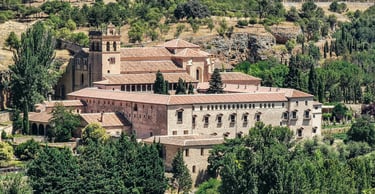
Recommended itinerary
The full route takes approximately three weeks and is best done by train. Look here for information on how to interrail. We would recommend at least two days for all the places and three for the bigger cities to include (day)trips to nearby sights. In case you want to travel by car, we would suggest picking the area around Bilbao or Malaga and adding some sights in those regions.
The order of locations as listed below is a logical train route (in both directions). You can switch or split your visit to Madrid and/or Cordoba as you'll come across those once again when travelling from Granada to Valencia.


The nearby villages of Zumaia, Getaria & Zarautz
In case you have a little more time on your hands, we highly recommend visiting some of the surrounding villages. You can easily do this by using the affordable local train (Euskotren), which drives all the way along the Basque coast. We visited Zumaia and it was one of the most impressive coastlines we have ever seen. The coast was formed during the Jurassic era and it has a very interesting layered structure with all different kinds of textures and colours.
Donostia (San Sebastian) & nearby villages
Donostia
Donostia and Bilbao are part of the distinct Basque Country. This autonomous region is partly located in France and Spain. Upon arrival in the 'Rio de Janeiro of Europe' that is Donostia (better known by its Spanish name San Sebastian), you'll be surprised by the moderate temperature, the lush surroundings and the beautiful architecture. If you stay in the neighbourhoods Gros, Zentroa (centre) or Parte Zaharra (old town), you'll find yourself perfectly located, at walking distance from the boulevards and the old town. The latter is THE place to be in the evening.
Kickstart your day with an amazing breakfast at Maiatza. You'll definitely need it, as there is enough exploring to do. Hike the Urgull mountain with the Jesus statue on it and/or take the funicular to the Igueldo mountain for the most stunning views of the bay. Refuel with some Pintxos (small Baskian bites, similar to tapas but more often served on a piece of bread) and the local dessert called tarta de queso (a super creamy cheesecake) at La Vina.
Then, explore the old town, where you'll find a picturesque harbour, a stunning basilica and the old Plaza de la Constitución, which used to be the place where bullfights were held. End your day with some amazing pintxos and drinks at Txepetca. You can also hop from bar to bar like a true local, but prepare to spend quite some time standing in line as this is a popular activity to do. Food and drinks are rather cheap here, which compensates nicely for the rather expensive accommodations.

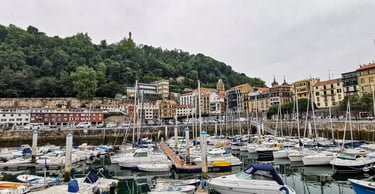
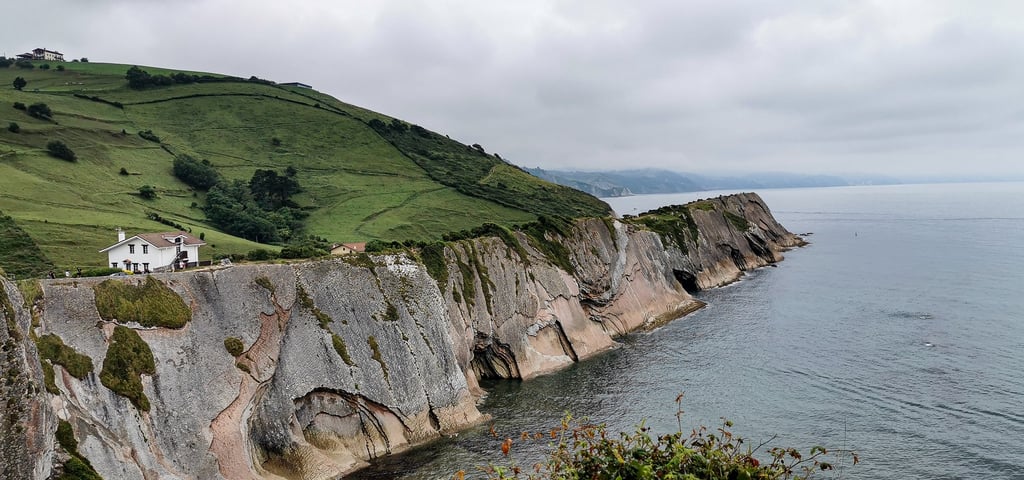


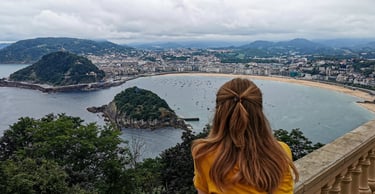
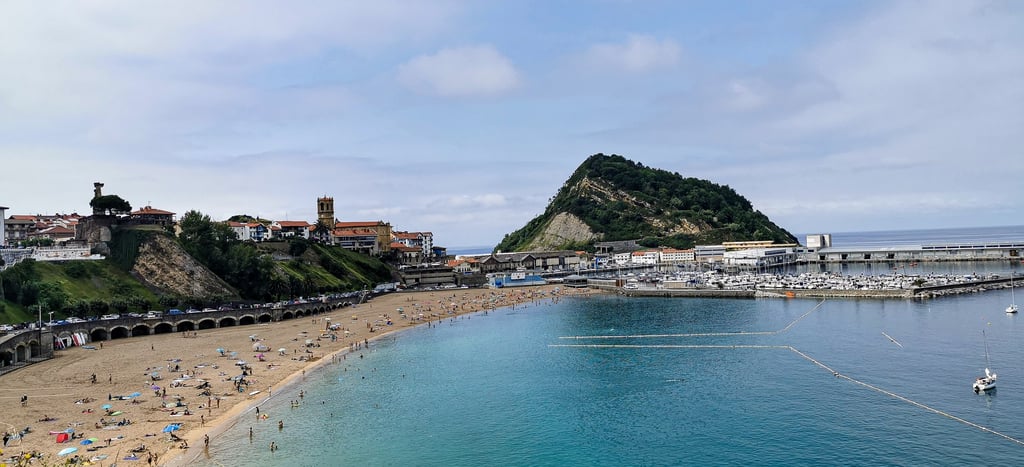

From Zumaia we took the bus to Getaria, which is well-known for its amazing fish restaurants. You should probably go there during the week or book in advance since we couldn't get a spot anywhere on Sunday afternoon... From Getaria, we would recommend walking to Zarautz, which takes about an hour. We didn't like Zarautz that much, but the long seaside walk was surely fun. Zarautz is also a great spot for surfing. From here you can take the train back to Donostia. You can also consider visiting one of the wineries in this area.
Bilbao & Urdaibai Nature Reserve
Bilbao
Within an hour, you can arrive in Bilbao by bus from Donostia. Upon arrival, you'll notice that the city is located in a valley. This gives you a beautiful view of almost the entire city when you stand on the famous Udaletxeko Zubia bridge over the Nervion River which splits the city in two.
Urdaibai Biosphere Reserve
From Bilbao, you can explore the area by Euskotren as well. Not too far is the Urdaibai Biosphere Reserve, which has a Unesco World Heritage status because of the special plant and animal species that are found here. Around this beautiful nature reserve are the small picturesque towns of Mundaka and Bermeo. We can highly recommend this as a day trip. In case you have the time, you can also visit Guernica which you'll come by along the way. It has nice lunch restaurants and you can learn more about the Spanish Civil War here.

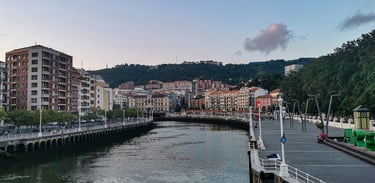
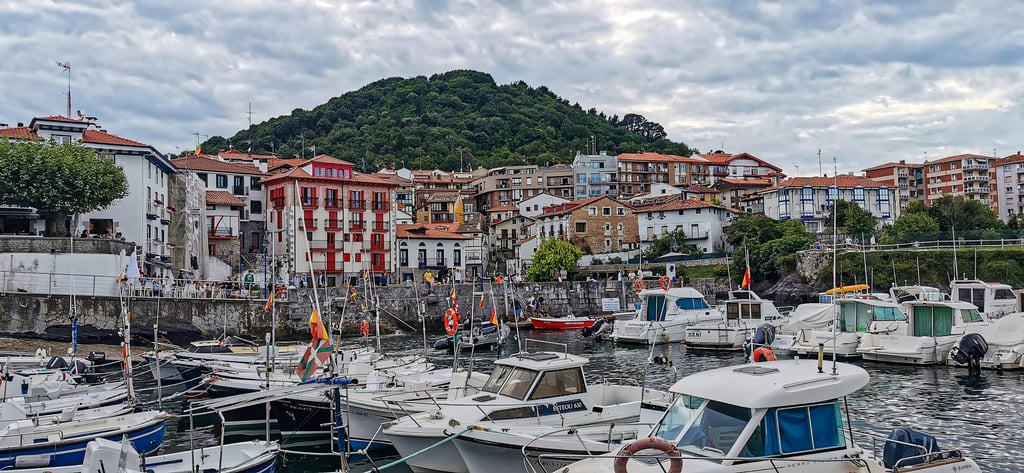

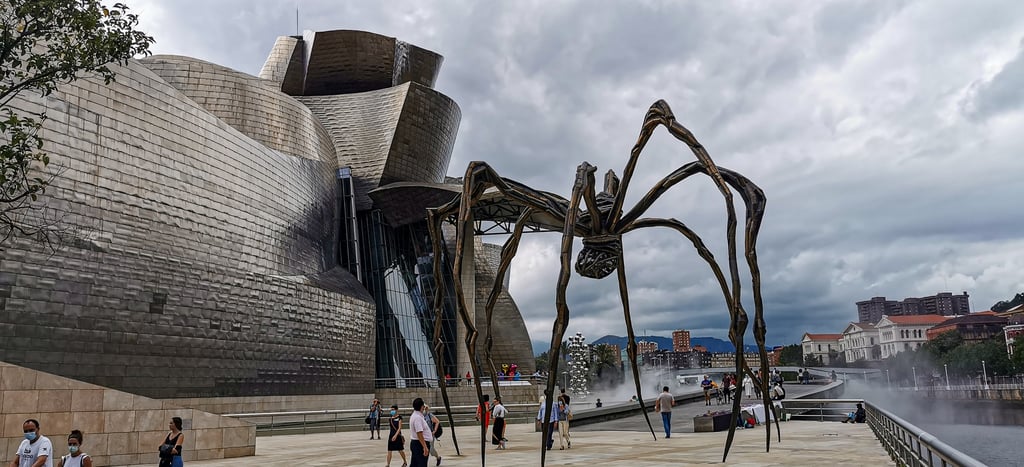



The highlight for us was definitely the Guggenheim Museum. If you're a fan of modern art, you can truly indulge yourself here. As far as we are concerned, it's a must-see when visiting Bilbao. We've also heard great things about going on a food tour through Bilbao, this way you get to visit the best pintxos bars and learn more about this gastronomy. We do have to admit, that as a city, we liked Donostia much more.
Madrid, Toledo & Segovia
Madrid
Madrid has a great atmosphere and plenty to do. In contrast to many other large cities, we found ourselves fairly often amongst locals. Of course, there are also enough 'tourist traps', but it is not difficult to eat at a nice bar. A few tourist highlights we visited were the Royal Palace, the Cathedral, Retiro Park, Plaza Major and the Archeological Museum. The flea market on Sunday called El Rastro is also really fun and located in the atmospheric neighbourhood La Latina.
Madrid is most of all a culinary hotspot. A typical thing to eat here is churros. These are fried dough sticks that the Spanish eat as breakfast, often dipped in chocolate. We ate them at the famous and old Chocolatería San Gines. Other culinary must-dos are to have a warm lunch in the afternoon and tapas at night, either at one of the indoor mercados (markets) or in a cosy bar. If you're digging something other than tapas, we can definitely recommend getting some amazing but cheap tacos at Takos Al Pastor. We can also recommend brunch and the most delicious pistachio croissant at the lovely Pom Pom Café.


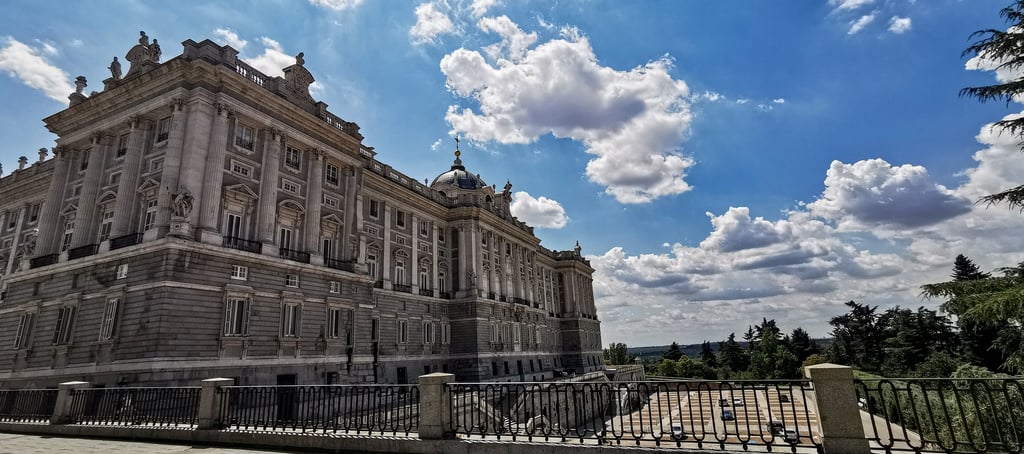

Toledo
Another activity we would highly recommend is visiting the nearby ancient cities of Segovia (our favourite) and Toledo. From Madrid, you can get to both in half an hour by train. Toledo was one of the most important cities in Spain before Madrid became the capital. A short walk away from the beautiful train station, you'll find yourself by the river, in front of the gates to the impressive fortified town above.
Everywhere in the city, you will find beautiful old architecture, such as more city gates, a mosque, a cathedral, several synagogues and a huge castle. From Parque de la Vega, you'll have a fantastic view of the city. You'll also come across a very interesting-looking building called Casa de Corcho, a.k.a. the cork house. Toledo is easy to visit on foot, although it can become really hot here in the summer, so take it easy.
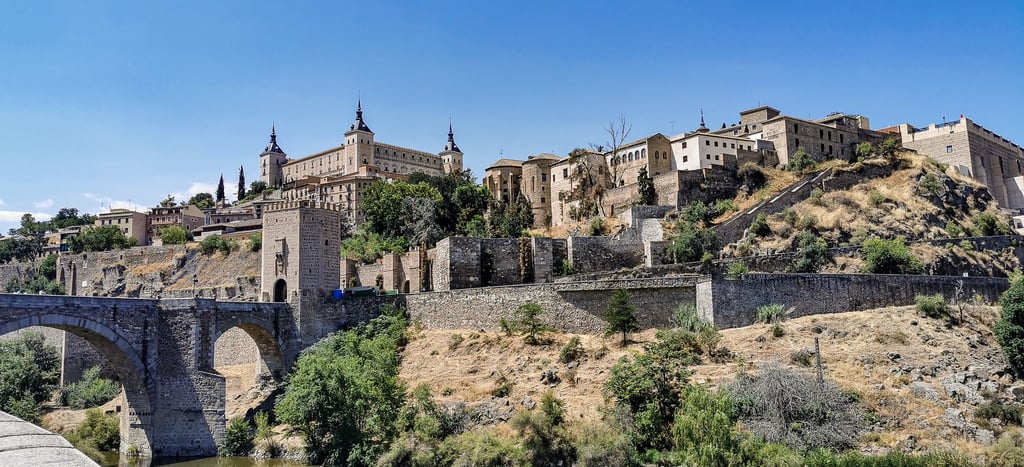


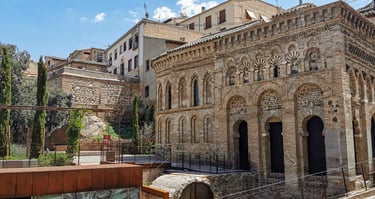
Segovia
We especially liked the beautiful small town of Segovia. Upon arrival, you will be overwhelmed by the immense Roman aqueduct that you can admire from all angles with hundreds of birds swarming in and around it. The cathedral is also really beautiful and impressively large.
Two other landmarks, the castle (Alcázar de Segovia) and the stunning Monastery of Santa María del Parral can be admired best from Plaza Reina Victoria Eugenia. In case it's not too hot and you have the time, you can consider walking towards the monastery to view Segovia from an entirely different perspective. This city walk takes you along all the highlights and includes this route.
In the afternoon, you can eat at one of the many amazing restaurants. Try out traditional dishes from the area, like Conchinillo (roasted suckling pig), Judiones de la Granja (a filling chickpea soup) and Patatas Revolconas (mashed sweet potato with crispy pig).

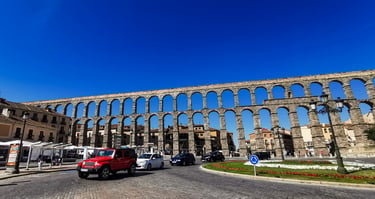
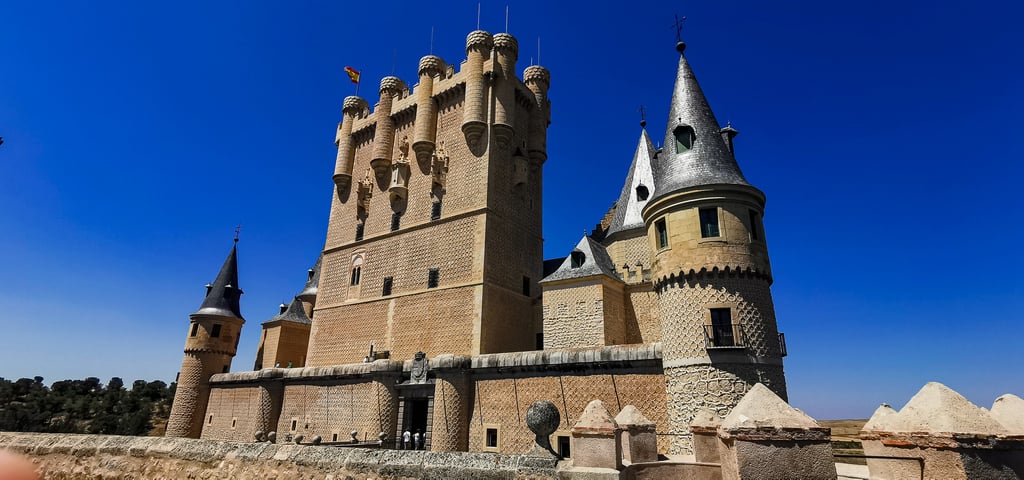

Córdoba
In the summer, it can get up to 40 degrees in Córdoba. We would therefore advise taking it easy, visiting places in the morning and escaping the heat in the afternoon. The undeniable highlight of Córdoba is the beautiful Mezquita. It has served as a church for hundreds of years, but before that, it used to be a mosque, the interior of which is still largely intact. You'll be amazed by the architecture and the beautifully detailed decorations that have remained after all these years.
After visiting the Mezquita, you can walk along the stunning exterior of the Mezquita, the old city gates and towards the Roman bridge over the river with a beautiful view of the Guadalquivir River. There are also some nice restaurants for lunch/brunch on the other side of the river, like the trendy The Club or the much simpler and local Bar los Romerillos, where they serve traditional dishes like the cold soup Salmorejo.
Another highlight is the Alcazar of the Christian Monarchs. The castle is fun to visit, but not very big, so it is mainly the beautiful garden which people come for. It is also wonderful to just stroll around the small city centre with its small old streets and wonderful mixture of Spanish and Arabic architecture.
We also enjoyed how culinary Cordoba is. Next to traditional Spanish restaurants, there are plenty of great Arabic restaurants. We would recommend an elaborate Spanish meal while watching Flamenco at Patio de la Judería, it's one of the only places where you can watch Flamenco for free. There is also a lovely food hall called Mercado Victoria.

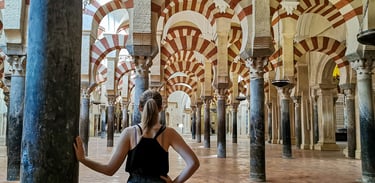
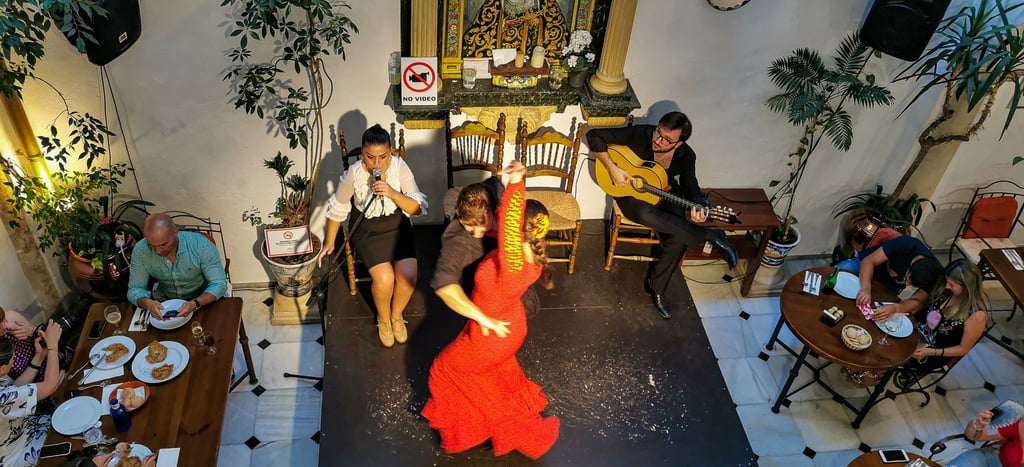

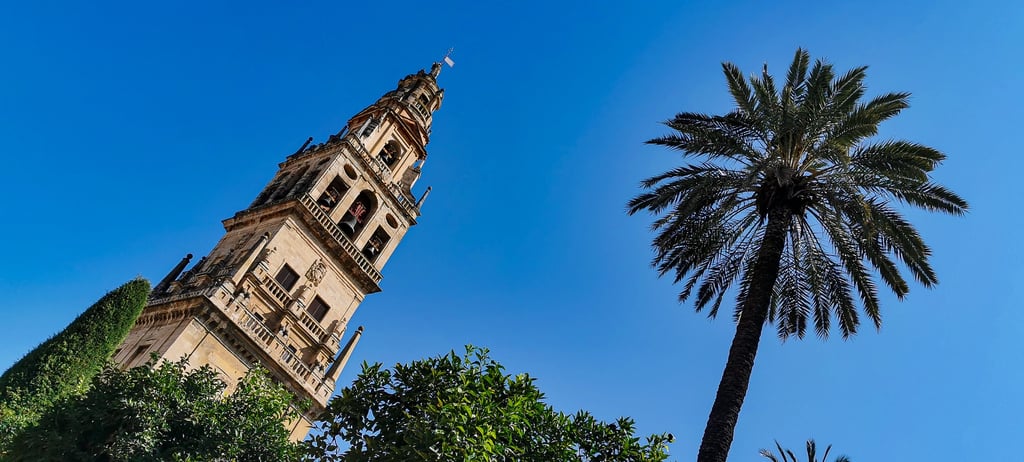

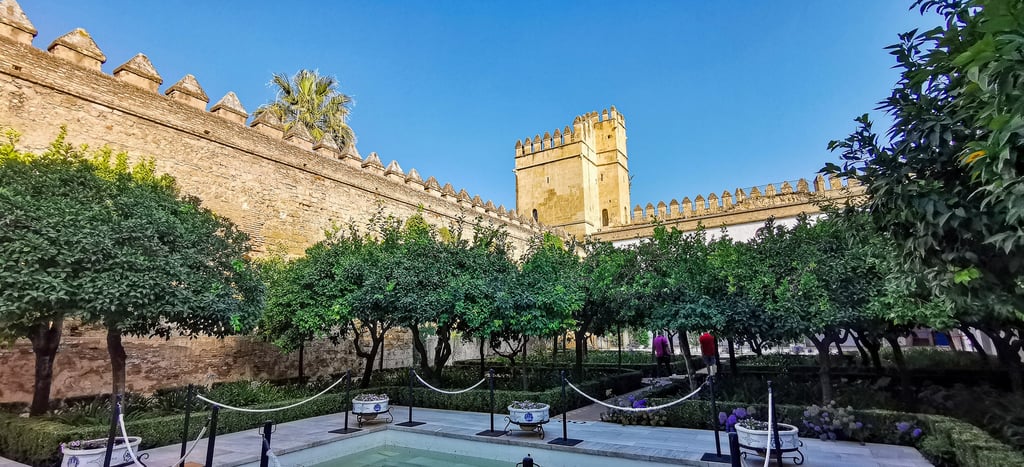

Malaga
Malaga is a lovely coastal city in the south of Spain. It is very atmospheric, and therefore it's lovely to stroll around the amazing and vibrant city centre, especially late in the afternoon and at night. You should definitely eat at one of the several amazing (tapas) restaurants here. We highly recommend Casa Lola, you'll probably have to stand in line but it's worth it (which is generally the case when you have to stand in a line in Spain). The centre of Malaga is really beautiful because of its traditional elegant architecture.
A few highlights in the city centre are the Amphitheater which is beautifully lit at night, the grand Cathedral, the Alcazaba and the Castillo de Gibralfaro. The latter two can be visited with the same ticket. We would advise going to one before lunch and one afterwards, as the Castillo is quite the climb. We liked the Castillo because of the amazing views of the city and harbour and we liked the Alcazaba because of the beautiful architecture with Arabic influences. Another fun thing to do is to walk the boulevard all the way to Malagueta Beach.
From Malaga, you can take a day trip to Ronda in case you don't want to visit it by train (more on Ronda later) and to Caminito del Rey. We would advise you to book these trips via GetYourGuide. Malaga is surrounded by some impressive nature parks and a day trip to Caminito del Rey is a great way to experience this, if you're not too afraid of heights...

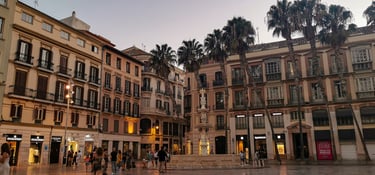
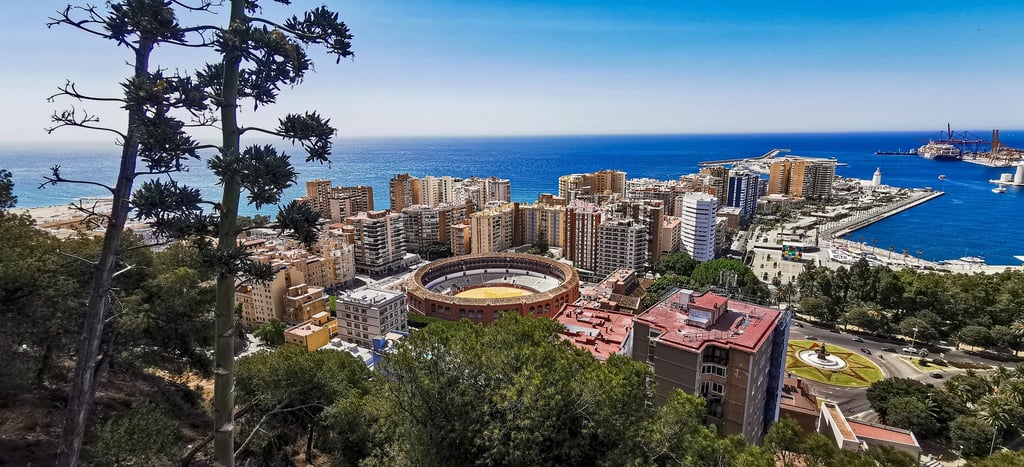


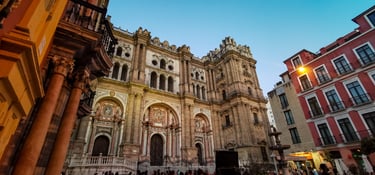

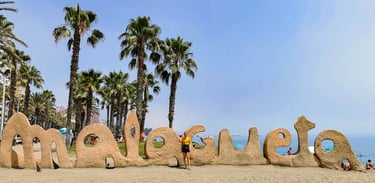
Gibraltar
From Malaga, you can easily reach the autonomous region of Gibraltar by bus. Gibraltar is politically part of the United Kingdom, which makes it a unique experience to visit it. We would recommend going to Gibraltar for two days, as there is a lot to see and as visiting 'the rock' can easily take you a full day. Check out our in-depth Gibraltar travel guide to make the best out of your visit. We'll share some of the highlights here for a good first impression.
The fun of Gibraltar already begins when crossing the border as you'll walk across the landing strip of the airport and be faced with the impressively large rock formation for which Gibraltar is known. An amazing place to visit is Europe Point, where you'll see the Strait of Gibraltar, the African continent, a beautiful mosque and a lighthouse.
Also go all the way up the rock of Gibraltar by cable car and explore the many sights around like the Skywalk, Saint Michael's Cave and the Great Siege and World War II Tunnels. Another thing the rock is known for is the Berber Monkeys, so beware...
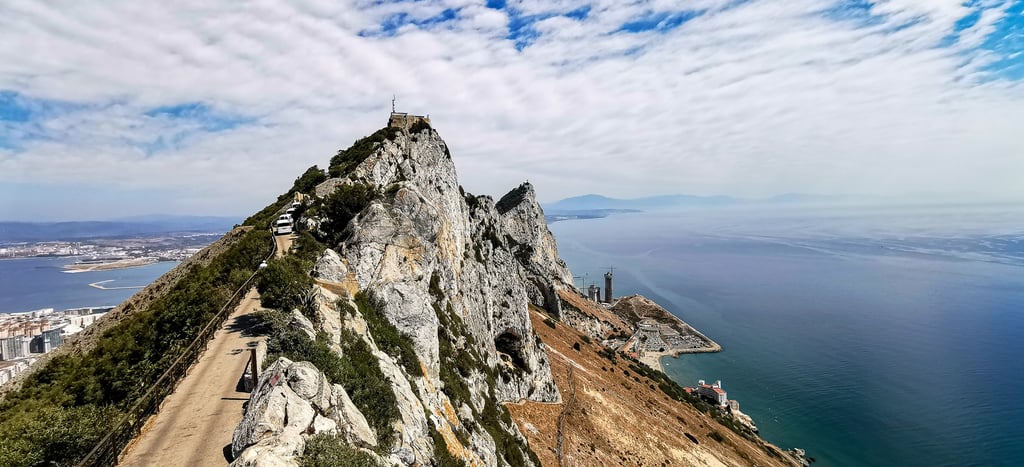

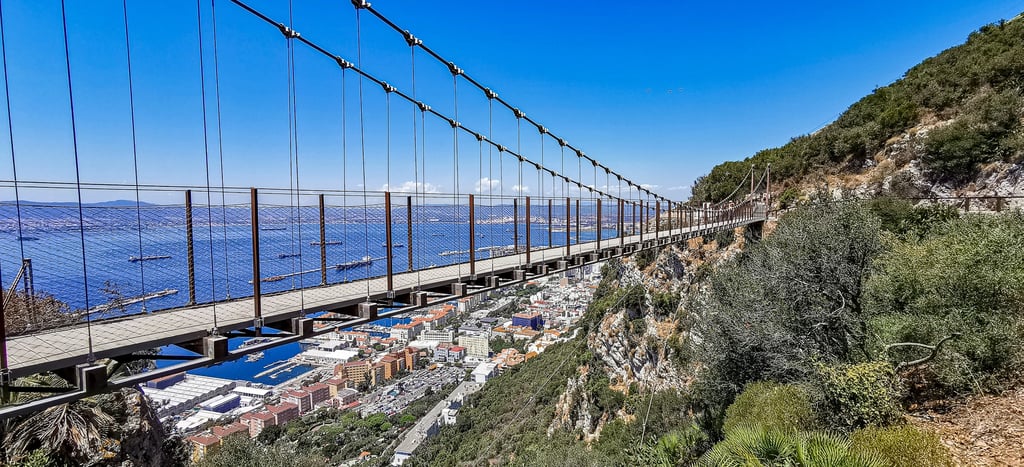

Marbella & Ronda
Marbella
Marbella is a touristy beach town between Gibraltar and Malaga. Going from Gibraltar to Ronda at once was a bit challenging, so we decided to use Marbella as an in-between stop. It's a cosy town with a lot of bars and restaurants and pretty little streets and squares like Plaza de los Naranjos. Marbella is a popular place to have a beach holiday, you can have long strolls over the boulevard and just chill and relax at the many beach resorts and cafés. This isn't really our cup of tea, so we only visited it shortly.

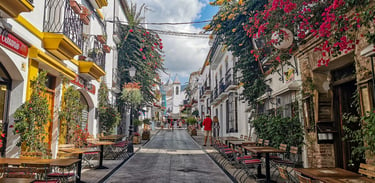
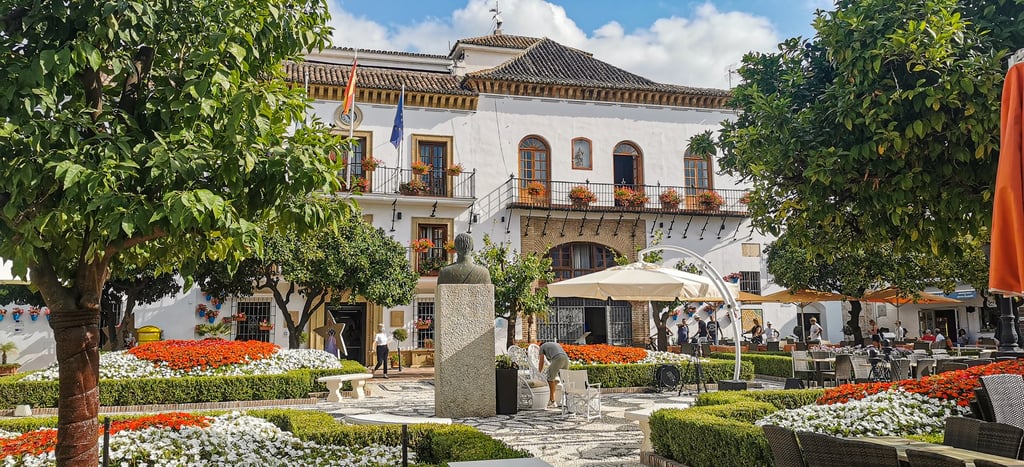

Ronda
From Marbella, you can easily reach Ronda by bus. This is one of the most beautiful routes we have enjoyed on our trip. Ronda itself is also one of the most stunning towns in Spain we've visited. It is well known for its great city walls and bridges that spare you from falling down the 100-meter-deep El Tajo Gorge. The most famous bridges are the Puente Nuevo and Puente Viejo. The 'new' bridge can be walked and driven over, while shivering we have to admit.
You can admire the special location of the city, namely on top of a mountain and surrounded by a vast valley, by walking the Paseo de los Ingleses (the observation platform at the city walls) all the way to the Puente Nuevo and by going to the Jardines de Cuenca (a beautiful park near the cliff). It is also really fun to just explore all the little streets and landmarks around as Ronda is quite small.
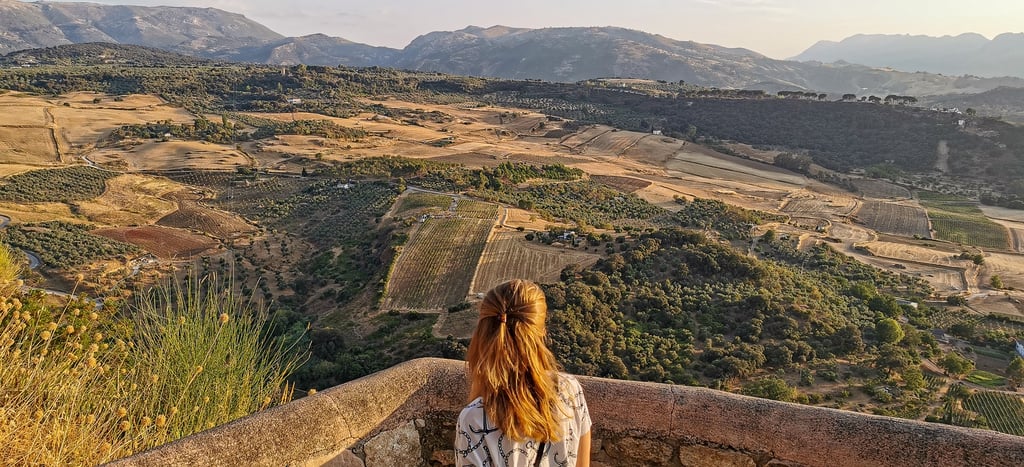

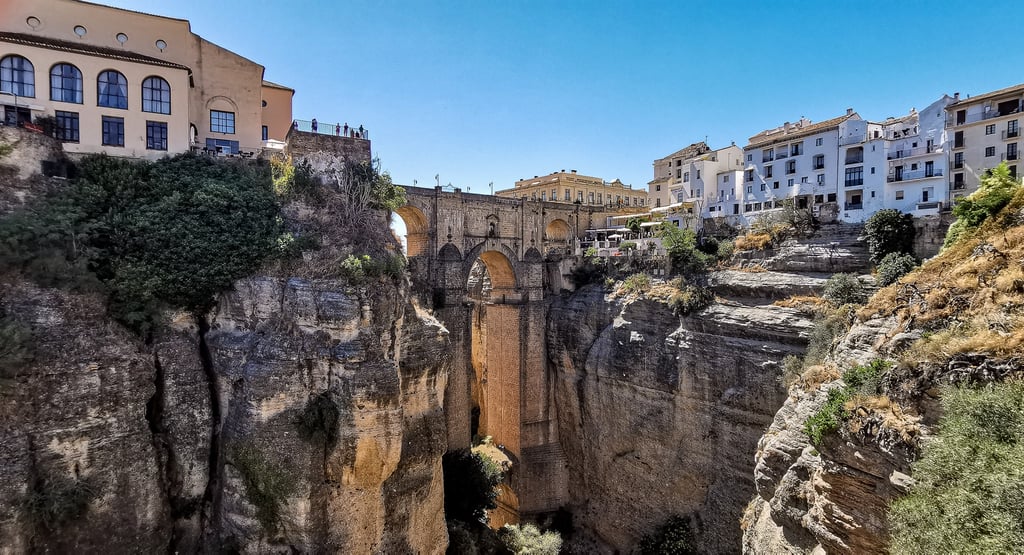

One landmark we would recommend visiting is the bull and horse arena, it's one of the oldest ones in the country and now mostly serves as a museum. Bullfighting doesn't occur here anymore, but you can learn about this as well as the city's amazing history.
You could visit Ronda in one day, but you can also stay for the night as Ronda has the BEST food we have had in Spain. We recommend tapas at El Lechuguita (super cheap and delicious) and Las Maravillas (a bit more expensive but truly amazing).
Another way to visit Ronda is to book a day tour from Marbella or Malaga (via GetYourGuide). These tours often include a short visit to Setenil de las Bodegas which is a beautiful small village in which the houses are built against the white rock walls.
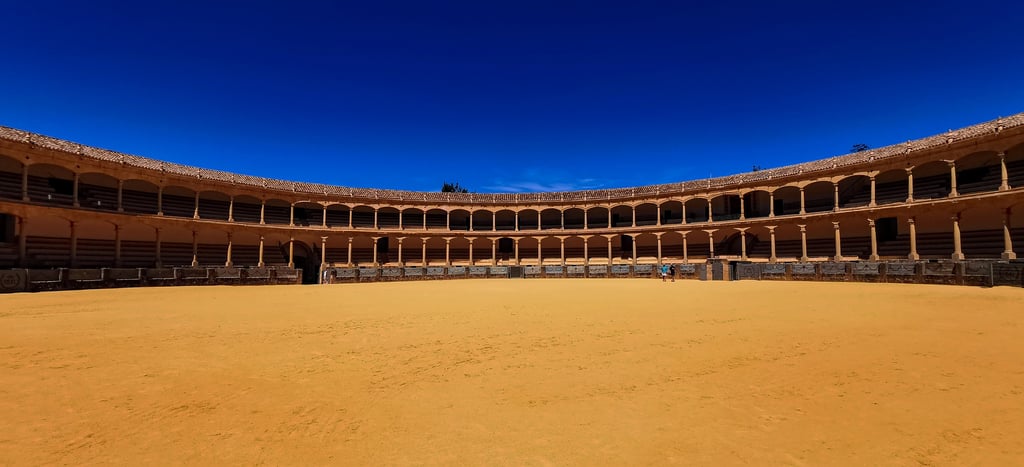


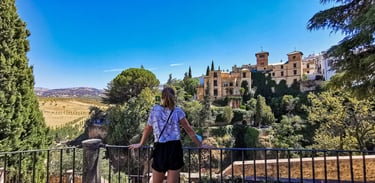
Granada
The train ride from Ronda to Granada is very beautiful as well. Sometimes you wonder if people really live here when coming across another small town in this almost desert-like part of Spain.
Granada itself is a very vibrant city because of the young people, mostly students, that live here. There is a nice mixture of Spanish and Arabic culture, which makes for a large diversity of restaurants and bars. Granada is known for the custom of getting a free tapa with your drink. We've come across Spaniards who named Granada their favourite food city because of the affordability of great food and drinks. We experienced it firsthand by enjoying tapas and a drink for just 15 euros at Bar la Riviera.
In case it's as hot in Granada as when we visited it, or you just fancy something sweet, get a 'cassata' or 'tarta' at Heladería los Italianos. It's one of the best ice creams we've ever had.
However, food is actually the second thing Granada is known for. The first thing is the amazing Alhambra, a Unesco world heritage and one of the ultimate sights to visit in the world, according to the Lonely Planet top 500.
Alhambra is the old city of the Nasrid kingdom, which is now the literal pinnacle of the city. You can reach it by walking all the way up from Cuesta del Rey Chico (the nicest walk) or by walking or taking the bus to Puerta de la Justicia. The latter is especially nice if you visit the Alhambra with some in-between breaks, to escape the searing mid-day heat for example.
We couldn't believe our eyes when witnessing the beauty of the place. What's impressive as well is that it is so well preserved. This can be partly attributed to the wife of Charles V, who thought the Arabic architecture was too beautiful to tear down. Like many others, we enjoyed the royal palace and garden the most.
Make sure to book your tickets well in advance and/or plan your visit to Spain during the off-season, which we can recommend for a sightseeing holiday anyway as the summers get scorchingly hot.
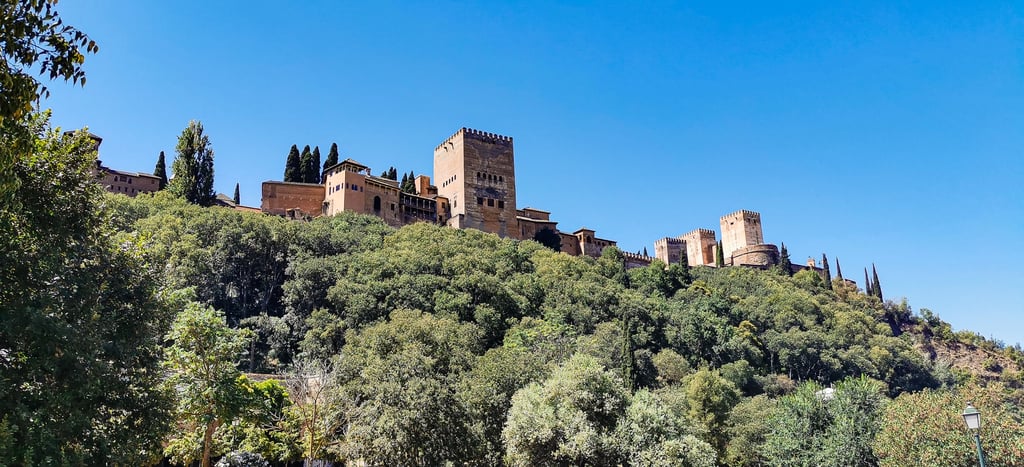



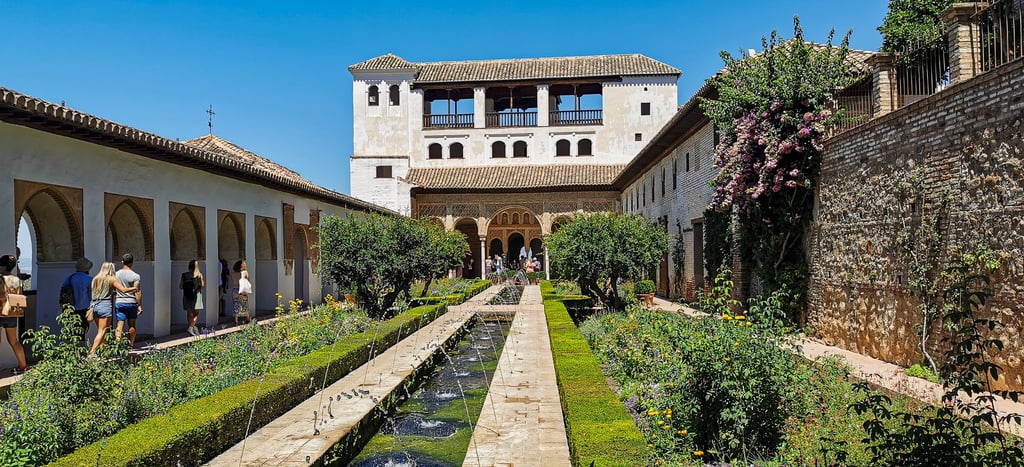

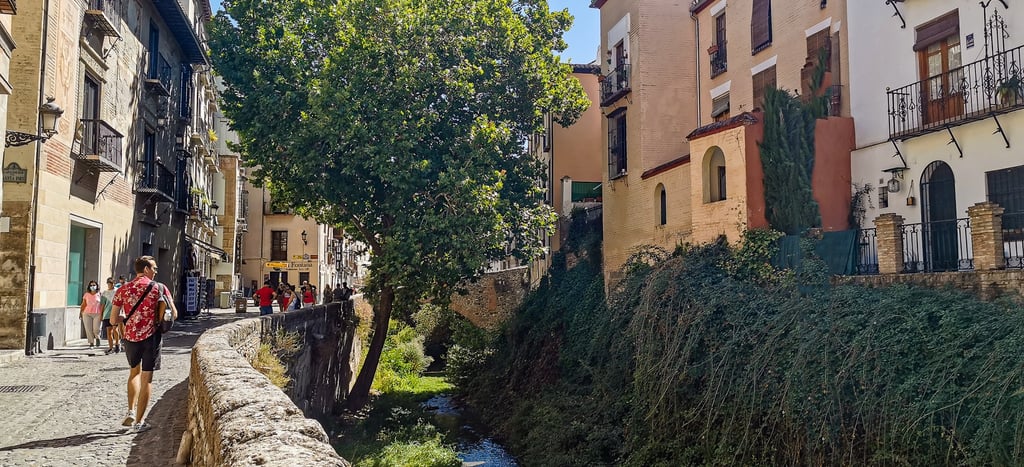

València
València is a very livable city and a place where many people go for a city trip, though we would suggest adding it as a destination as part of a longer trip through Spain.
Valencia is a true 'foodie' paradise. There are many amazing breakfast, lunch and dinner options. You can have a very hip breakfast with poached eggs and the most delicious sandwiches, which is probably caused by the many north-western European people (especially Dutchies) that visit València. Our favourite breakfast and cake spot was Dulce de Leche Boutique, with an overwhelming selection of hearty and sweet baked goods.
Our favourite dinner spot was Voltereta, Bienvenido à Bali. There was little Spanish or Balinese about the food, but the natural paradise decorations made it one of the most beautiful restaurants we ever ate at and it took us straight into dreaming about faraway destinations again. It is also very affordable for the quality and experience you get, so make sure to reserve a spot at this popular restaurant.
If you prefer more traditional Spanish food, you can go to one of the mercados (markets), especially Mercat de Colón, or a paella restaurant as this famous rice dish originates from this area. The traditional Valencian paella consists of beans, chicken and rabbit.


A fun, off-the-beaten-track activity to do is to cycle all the way to the Parc Natural de l'Albufera. This long scenic ride (roundtrip is about 35km) will take you along the industrial side of València and the beautifully rugged dunes and beaches. You have to be cautious at the end of the ride, as you'll have to cycle along the busy road for the last part (we couldn't find a cycling path...). Also make sure to take some food with you, as there are no food options at the park itself.
At Mirador del Pujol you can book a beautiful boat ride on the lake, which originated as a huge lagoon, i.e. a lake where fresh and salt water come together, resulting in a special ecosystem. It also proved to be a great environment for growing rice. Therefore, today the lake is only a fraction of what it used to be. The fact that so much rice is grown here also explains why the dish paella originates from here (and perhaps also why the original version contains rabbit...).
We would highly recommend renting a bike for two days. This way you can explore the many sights around town like the futuristic science park, the beach (have a cocktail at the cosy beach bar Chininguito ElOcho) the Mercado Central, La Lonja de la Seda de Valencia (a beautiful old building that functioned as a silk market) and the Basilica. Apart from the science park, all the other spots are nearby, so you can also do those on foot and take in the wonderful atmosphere and architecture of the city.
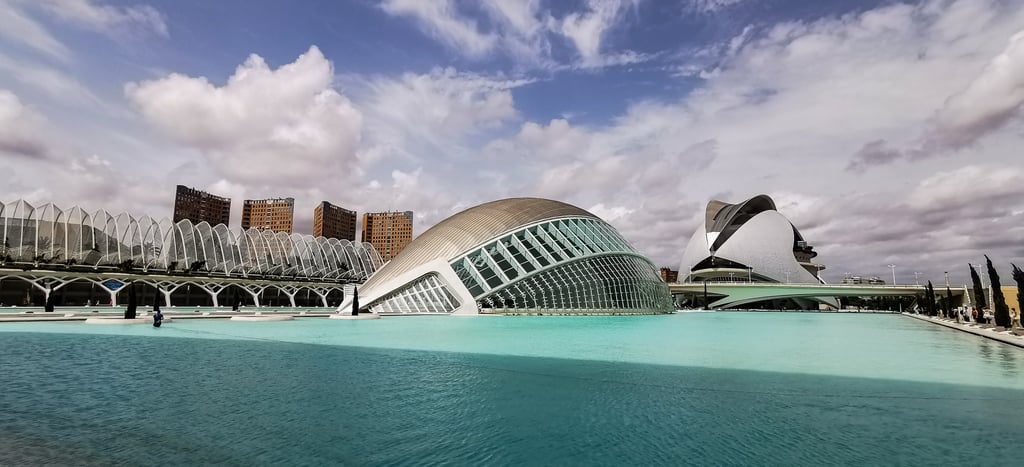



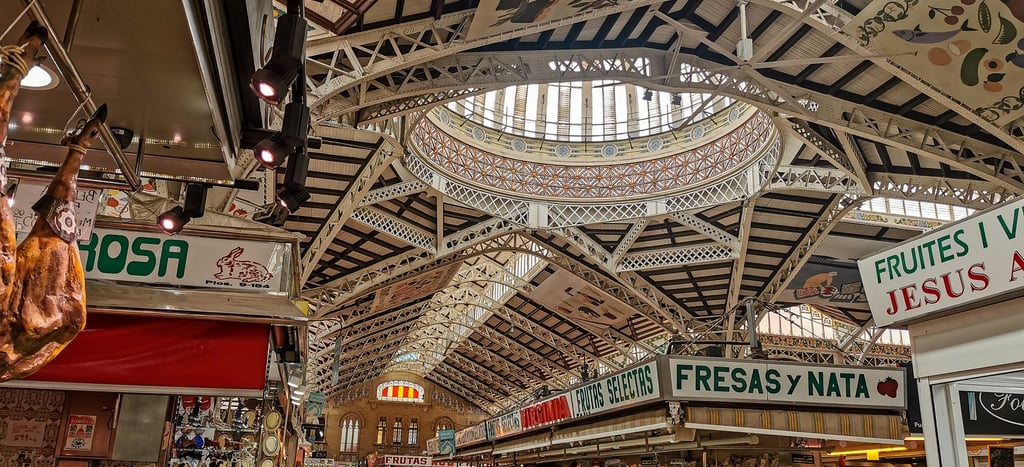

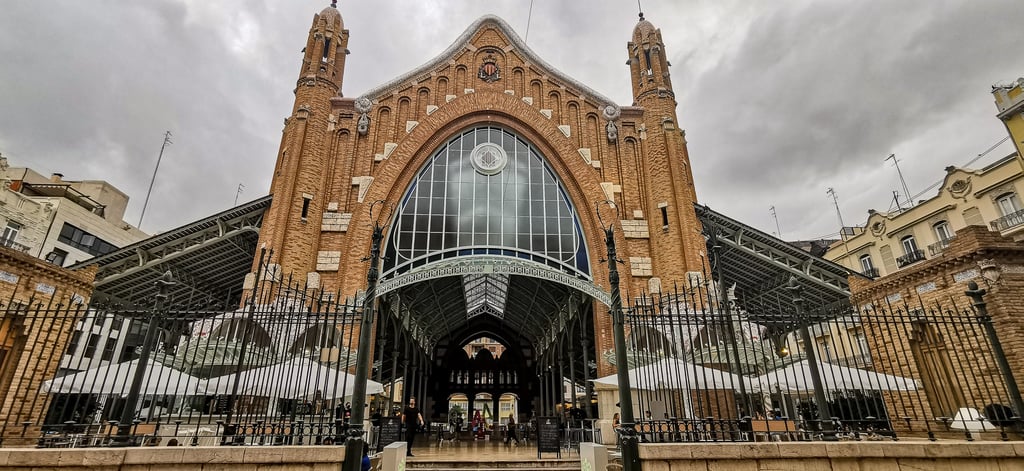

Barcelona
We didn't do a lot in Barcelona because we were kinda exhausted from our four-week trip through Spain. However, we do have a few tips we'd like to share. First of all, we can recommend visiting the incredible Sagrada Família cathedral, it's steeply priced (26 euros), but a wonderful experience that you can hardly miss. If you don't want to spend this much money on it, you can admire it from the outside, which is spectacular on its own already. A little 'travel hack' for free entry is to participate in the mass on Sunday morning.
Another thing we enjoyed was going to the beach near Parc de la Ciutadella and then strolling around the neighbourhood where the famous La Rambla Street is located. We have to admit, however, that the latter is very touristy, so if you want a more authentic Barcelona experience, this isn't really the place to be.
Another place to visit on the edge of the city is Montjuïc, which is a beautiful park with a stunning view of the city. This can also be your alternative to the very touristic Park Guëll (which has a 10 euro admission fee), although this park can be recommended in case you want to see more of the beautiful Gaudi architecture. Don't forget to add Casa Milà and Casa Batllo in that case as well. These are very expensive to visit as well (25-28 euros) but are already impressive enough on the outside if you ask us.


Besides exploring the large city of Barcelona itself, it's also very much worth visiting the incredible Montserrat monastery, which is about an hour away by train from the Plaça Espanya station. When you arrive at the Monistrol de Montserrat station, you can either continue by train or take the old funicular. We did the latter, which brought us a frightening 400-meter elevation up the mountain. We found it rather scary, so next time we'll probably take the train. The monastery complex is truly stunning and in our opinion a must-visit when you're in Barcelona.




